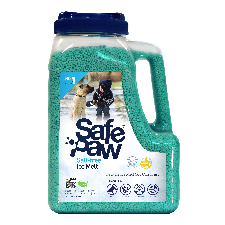What Ice Melt Will Not Damage Concrete
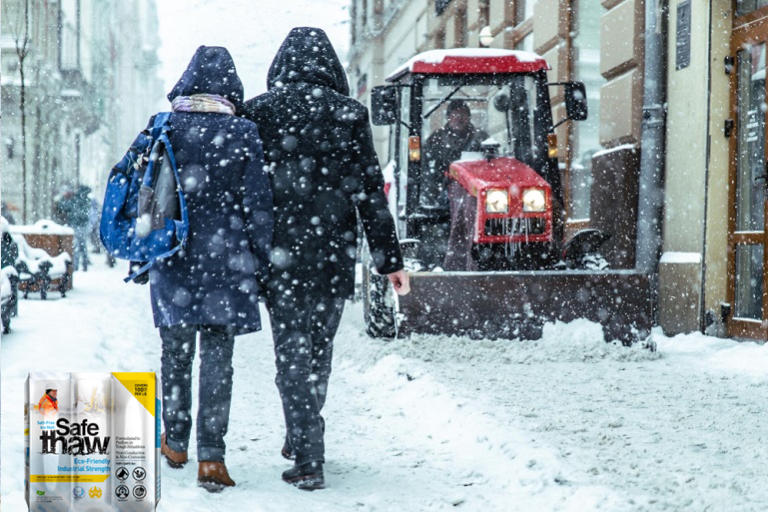
We know that when it comes to ice melt, you want the best for your concrete. After all, you chose a concrete driveway and garage because you wanted durability and strength. You didn’t want to worry about cracks and damage from harsh weather conditions.
But now that winter is here with another challenge: keeping the ice from forming in your driveway, driveway entrance, and garage.
You’ll need to consider things like— what ice melt will not damage concrete. And if you’re wondering— what can I use to melt ice on new concrete, we’ve got you covered.
What Ice Melt Will Not Damage Concrete?
Winter conditions often lead to slippery, ice-covered surfaces that require deicing for safety. However, many ice melt products can harm concrete, causing scaling, spalling, or discoloration. Choosing the right concrete safe ice melt not only preserves your driveway’s integrity but also minimizes environmental impact. In this guide, we’ll explore eco-friendly alternatives, preventative strategies, and proper application techniques to ensure your concrete surfaces remain safe and durable.
How Do You Melt Ice Without Damaging Concrete?
Using the right ice melt concrete safe and following these practices can help you melt ice without damaging your concrete:
- Choose Concrete-Safe Ice Melt: Opt for ice melt products that are specifically labeled as safe for concrete. These products are formulated to minimize the risk of ice melt concrete damage.
- Avoid Harsh Chemicals: Stay away from ice melt products that contain harsh chemicals like calcium chloride, which can accelerate concrete deterioration.
- Use a Broom: Before applying ice melt, use a broom to remove loose snow and ice. This reduces the amount of ice melt needed and minimizes contact with the concrete surface.
- Follow Instructions: Read and follow the manufacturer’s instructions carefully when applying ice melt. Overusing ice melt can increase the risk of damage.
How To Repair Ice Melt Concrete Damage?
If you notice concrete damage caused by ice melt, consider these steps:
- Clean the Surface: Remove any loose debris or damaged concrete fragments from the surface.
- Patching Compounds: Use a concrete patching compound to fill in cracks or holes. Follow the manufacturer’s instructions for proper application.
- Resurfacing: In cases of extensive damage, consider resurfacing the affected area with a concrete resurfacer to restore the appearance and functionality of the surface.
What Ice Melt Can Damage Concrete?
Certain ice melt products, particularly those containing calcium chloride and rock salt, have the potential to damage concrete over time. These products can contribute to surface scaling, spalling, and deterioration.
What Is the Least Damaging Ice Melt?
Choosing ice melt products that are labeled as safe for concrete is the best approach to minimizing potential damage. Look for ice melt solutions that are formulated to be less corrosive to concrete surfaces.
What Ice Melt Will Not Damage Concrete?
Salt can be used to melt ice, but it’s not environmentally friendly. It can also damage concrete and plastic and cause plant damage and skin irritation. It’s toxic to pets if they ingest it.
And it’s downright harmful to humans to breathe the vapor or touch their eyes after coming into contact with ice melt products containing calcium chloride.
So if you’re applying any de-icer on your walkways or steps because of slippery conditions caused by snowmelt and rainwater runoff, make sure you have proper ventilation (open windows) or wear gloves when handling these chemicals!
Ice melt is a great way to keep your concrete safe and sound. While it’s important to use caution with any chemical you’re applying to your concrete, there are some ice melts that are safer than others.
You can also use Safe Thaw to melt ice on sidewalks and driveways. Ideally, spread the product on the ground before a storm begins. This will give you a head start in keeping your driveway clear of ice and snow.
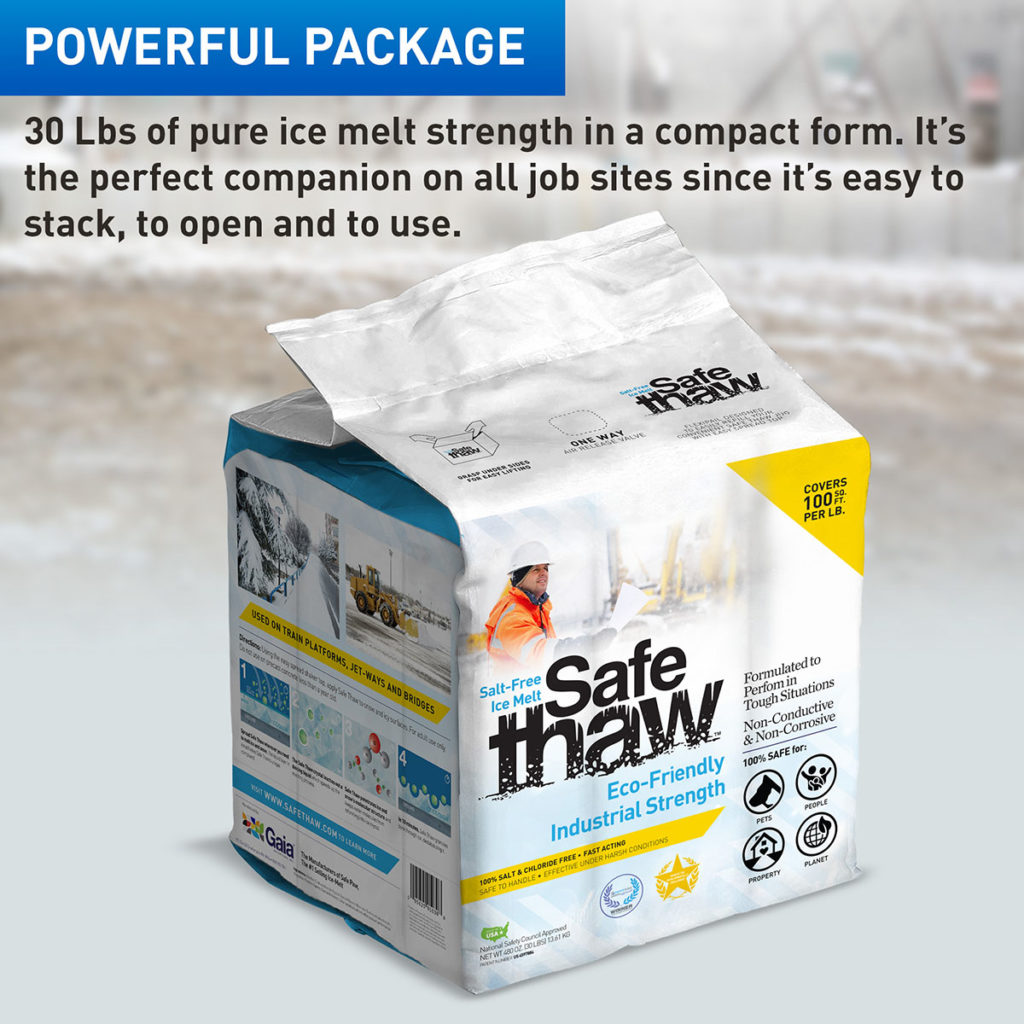
Safe Thaw
Safe Thaw was created as the ice management solution for tough winter environments. Ideal in commercial and industrial properties, shops, government agencies, bridges, and construction.
Environmental Impact of Ice Melt Products
While ice melt products improve safety during winter, their environmental effects can be significant.
Soil Degradation
Traditional ice melts containing sodium chloride or calcium chloride can alter soil composition, reducing its fertility. These chemicals leach into the ground, negatively affecting vegetation and the growth of plants near driveways and walkways.
Water Contamination
When ice melt chemicals dissolve, they can run off into nearby water bodies, increasing salinity levels. This disrupts aquatic ecosystems, harming fish and other wildlife.
Harm to Vegetation and Wildlife
Chlorides and other harsh chemicals can burn plants, damage roots, and create an inhospitable environment for wildlife. Opting for eco-friendly options, such as industrial ice melt with safety in manufacturing plants products designed for environmental safety, reduces these risks.
Choosing Eco-Friendly Ice Melt Options
Products like Safe Thaw are free from harmful chlorides and biodegradable, making them ideal for protecting both concrete and the environment. These solutions are safe for pets, children, and nearby greenery.
Preventative Measures to Minimize Ice Accumulation
Reducing the formation of ice minimizes the need for deicing agents and protects concrete surfaces.
Prompt Snow Removal
Remove snow immediately after it falls to prevent it from compacting and forming ice. Use tools like plastic-edged shovels or snow blowers to avoid scratching or damaging concrete surfaces.
Proper Drainage Systems
Ensure your property has adequate drainage systems to divert water away from concrete surfaces. Poor drainage can lead to water pooling, which subsequently freezes and creates a hazardous surface.
Physical Barriers
Installing snow fences or other physical barriers can reduce snow accumulation on driveways and walkways. These barriers prevent drifting snow from settling and forming ice patches.
Use of Traction Aids
Instead of relying solely on ice melt, consider using sand, volcanic granules, or kitty litter to improve traction on icy surfaces. These materials do not contribute to concrete deterioration.
Comparative Analysis of Ice Melt Products
Selecting the best ice melt product involves evaluating its effectiveness, safety, and environmental impact.
Sodium Chloride (Rock Salt)
- Effectiveness: Works well at temperatures above 20°F.
- Impact on Concrete: Can cause scaling, spalling, and surface discoloration.
- Environmental Effects: High; leads to soil and water contamination.
- Cost: Affordable but may lead to expensive concrete repairs.
Calcium Chloride
- Effectiveness: Works at temperatures as low as -25°F.
- Impact on Concrete: Less damaging than sodium chloride but can still cause deterioration with frequent use.
- Environmental Effects: Moderate; harmful to plants and aquatic systems.
- Cost: Higher than sodium chloride.
Magnesium Chloride
- Effectiveness: Effective at temperatures down to -13°F.
- Impact on Concrete: Gentler on concrete but not entirely safe for long-term use.
- Environmental Effects: Less toxic than sodium chloride but still contributes to soil salinity.
- Cost: Mid-range.
Chloride-Free Ice Melts (e.g., Safe Thaw)
- Effectiveness: Performs well in extreme cold while being safe for concrete.
- Impact on Concrete: Does not cause scaling, spalling, or discoloration.
- Environmental Effects: Biodegradable and non-toxic.
- Cost: Slightly higher but worth the investment for long-term protection.
Application Best Practices for Ice Melt on Concrete
Using ice melt correctly ensures safety and minimizes potential damage to concrete surfaces.
Apply in Recommended Quantities
Avoid overapplication, as excess ice melt can concentrate chemicals in one area, increasing the risk of damage. Follow the manufacturer’s guidelines for the appropriate amount to use.
Spread Evenly
Use a spreader to distribute the ice melt evenly across the surface. This prevents clumps, which can cause uneven melting and potential damage to the concrete.
Timing is Key
Apply ice melt before a storm or immediately after snow begins to fall. This prevents ice from bonding to the concrete surface, making removal easier.
Clean Up Residual Product
After the ice melts, sweep away any remaining granules to prevent buildup. This step is crucial for reducing long-term exposure to chemicals and maintaining a clean surface.
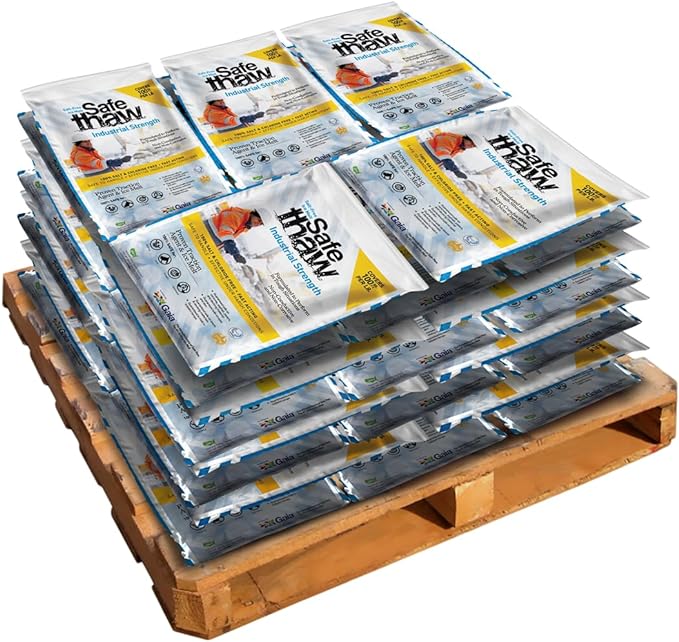
40 Bags
Safe Paw Thaw Industrial Strength Salt-Free Pet Safe Snow Ice Melter and Traction Agent for Concrete, Asphalt, Decks, Lawns, and More, 43 Pound Bag- 40 Bags
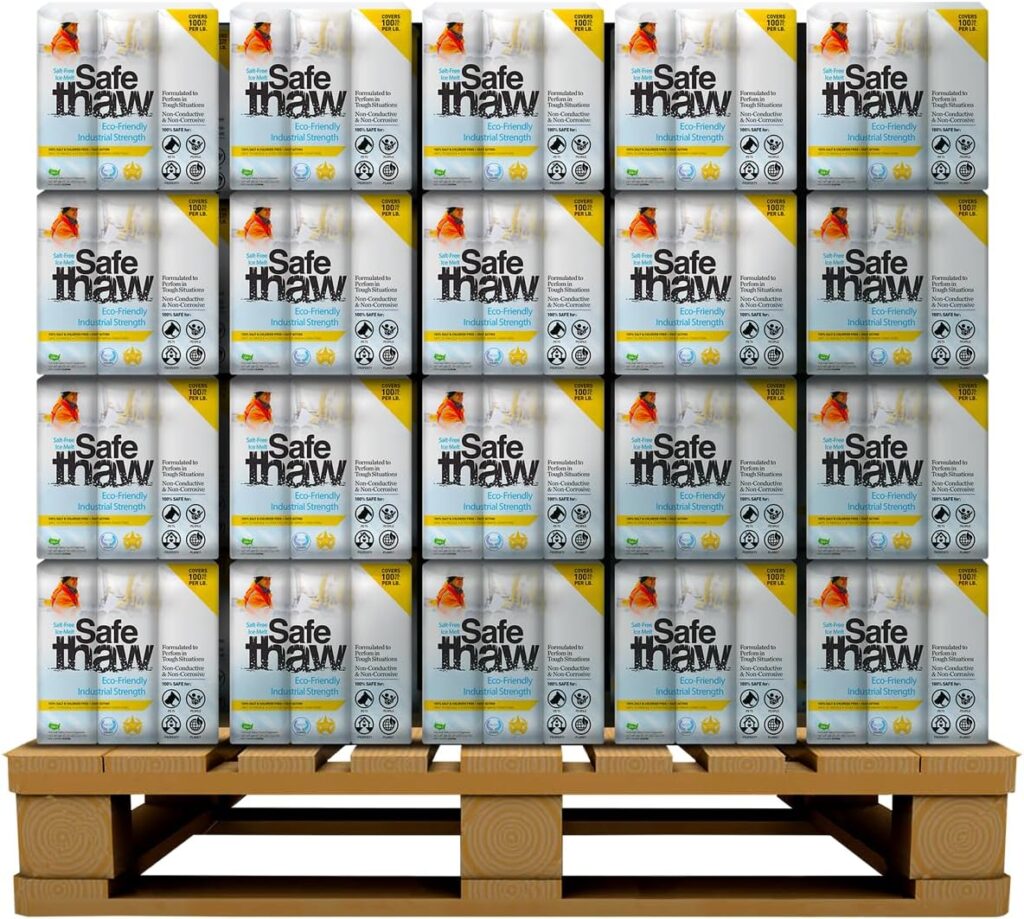
100 Boxes
Safe Thaw Industrial Strength 100% Salt/Chloride-Free, Pet/Paw-Safe Snow & Ice Melter and Traction Agent. Use on Concrete, Asphalt, Roofs & On Any Surface, 30 Pound FlexiPail- 100 Boxes
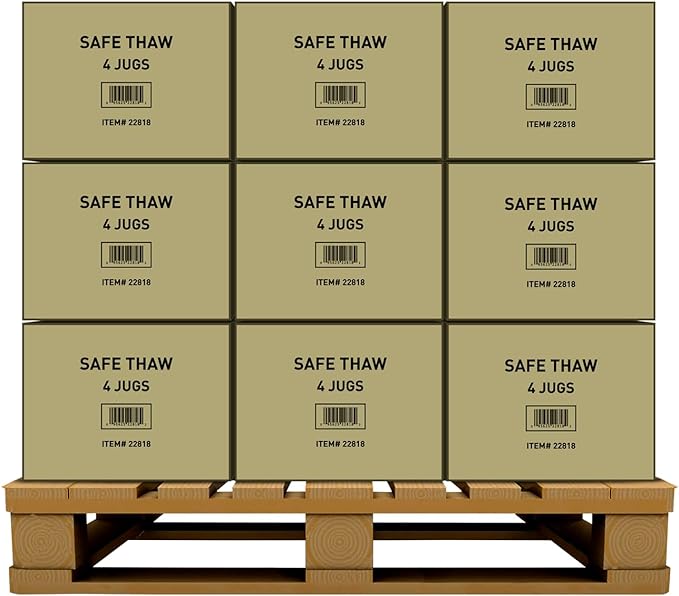
105 Jugs
Safe Thaw Concrete Safe 100% Salt-Free, Pet Safe Snow and ice Melter, Industrial Strength, Chloride-Free, and Traction Agent. Use on Asphalt, Roofs & On Any Surface, 10 Pound Jug- 105 Jugs
Industrial Ice Melt for Enhanced Safety
For high-traffic areas, such as safety in manufacturing plants or commercial properties, industrial-grade ice melts provide effective solutions without compromising safety.
Benefits of Industrial Ice Melt
- High Performance: Designed for extreme temperatures and large areas.
- Concrete Safety: Formulated to be gentle on concrete surfaces while delivering powerful ice melting capabilities.
- Environmental Considerations: Many industrial products now incorporate eco-friendly ingredients to minimize their ecological impact.
Choosing the Right Product
Ensure the product is specifically labeled as safe for concrete. Look for certifications or endorsements that highlight its effectiveness and environmental safety.
Finally, The Answer To Your Question—
What Can I Use To Melt Ice On New Concrete?
Your Concrete-Safe Ice Melt Solution Safe Thaw is a revolutionary ice melt product that effectively melts ice and snow while being gentle on concrete and other surfaces. It offers the following benefits:
- Safe Chemistry: Safe Thaw is made with a patented dual-effect formula that breaks surface tension and instantly melts ice, speeding up the melting process.
- People, Pet & Plant Safe: Safe Thaw is safe on eyes, skin, paws, and if ingested. It’s all-around safe and 100% salt-free.
- Surface Safe: Safe Thaw is 100% safe on all surfaces, including concrete that is at least one year old, pavers, brick, stone, and more.
- Non-Corrosive & Non-Conductive: Safe Thaw won’t damage delicate machinery and will not short circuit expensive equipment.
100% salt & chloride-free, fast acting Ice Management Solution
You can also use Safe Thaw to melt ice on pavers, sidewalks, and driveways. Ideally, spread the product on the ground before a storm begins. This will give you a head start in keeping your driveway clear of ice and snow. However, if your concrete is less than one year old, we don’t recommend using any ice melt.
If you don’t have time to apply Safe Thaw before the snowfall begins, don’t worry! Spread it as soon as you notice snow on your lawn or garden bed. It’s still effective at melting ice in these cases by turning up the heat directly beneath it—no electricity is required!
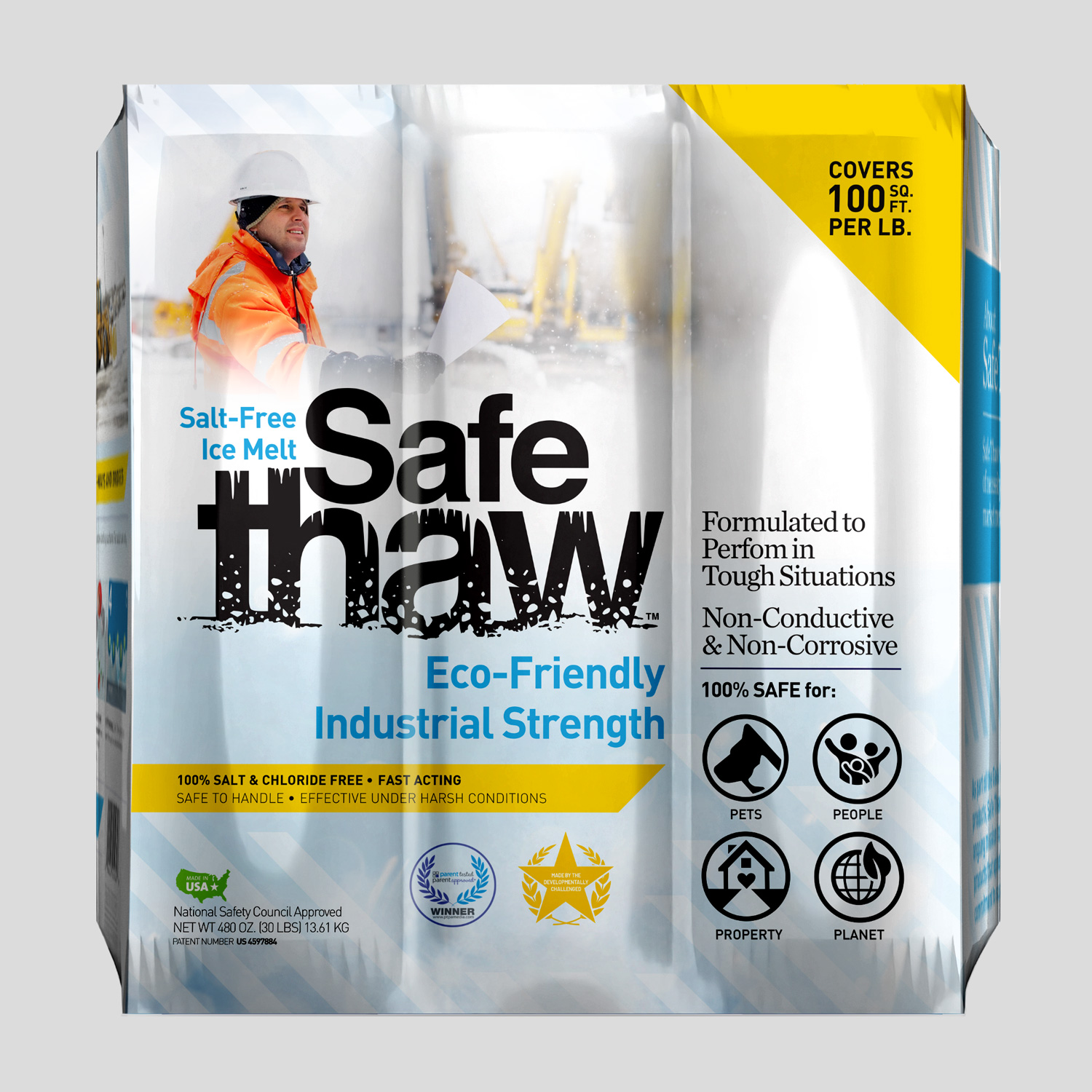
Safe Thaw
Safe Thaw was created as the ice management solution for tough winter environments. Ideal in commercial and industrial properties, shops, government agencies, bridges, and construction.
Conclusion
Choosing the right concrete safe ice melt is essential for protecting your surfaces and the environment. By understanding the environmental impact of various ice melt products and adopting preventative measures, you can reduce your reliance on deicing chemicals while maintaining safe and durable concrete.
Products like Safe Thaw offer a chloride-free, eco-friendly solution that prioritizes safety without sacrificing performance. Combined with proper application techniques and regular maintenance, these practices ensure your concrete surfaces remain in excellent condition throughout the winter season.
FAQs
Try Also Our Other Winter Safety Products:
Traction Magic
Stay safe on slippery surfaces with a product that’s 100% natural and safe for pets, people, and your property. Whether it’s sidewalks, steps, or even your car’s traction, Traction Magic is the go-to choice.
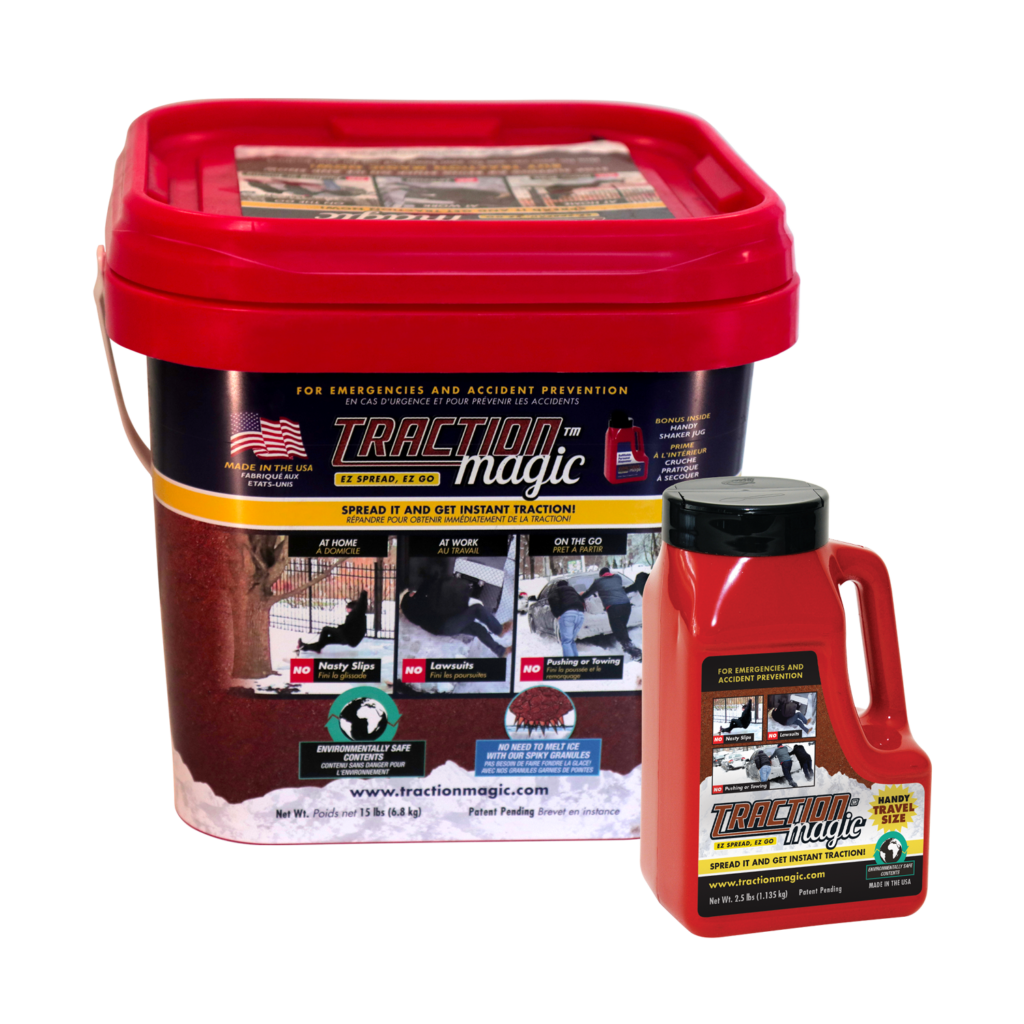
Safe Paw
The Original and #1 Selling Pet and Child Safe Ice Melt for over 20 years. Guaranteed environmentally safe –It won’t harm animals or children, and it won’t damage your property. That’s Safe Paw. Safe Paw can change how winter affects our planet.
